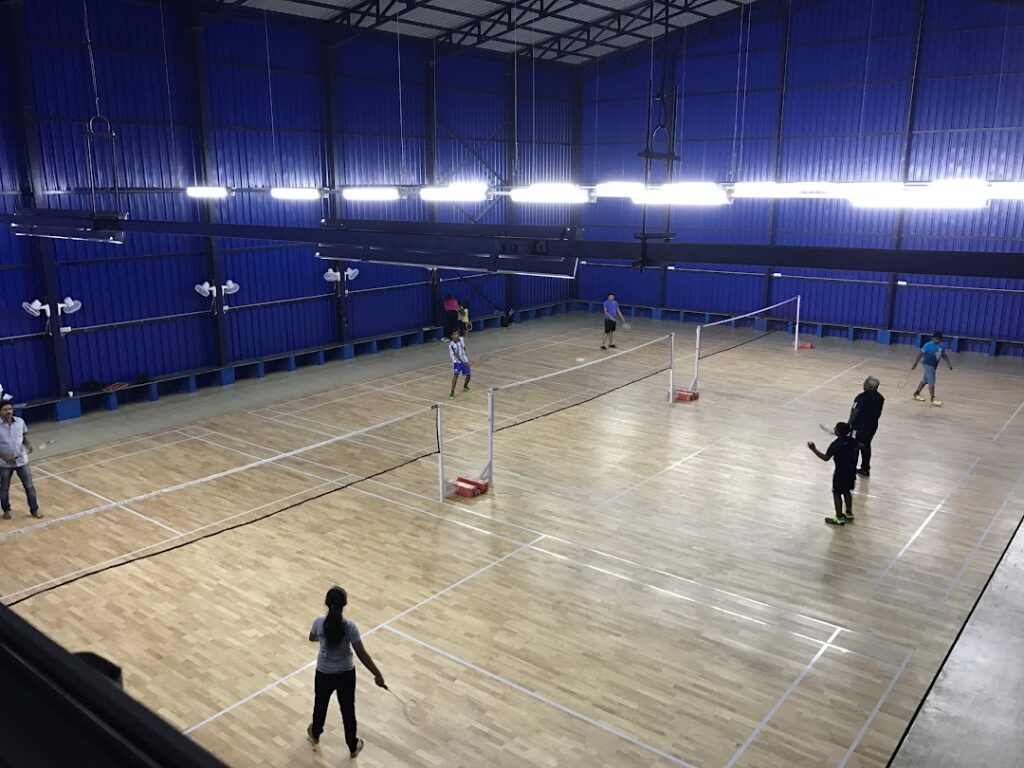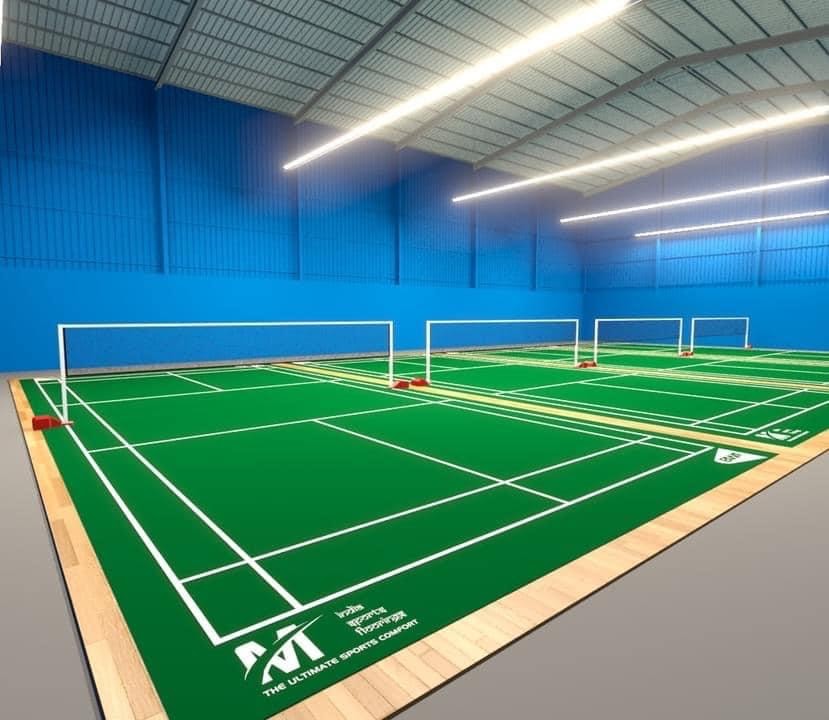
The Ultimate Guide to Badminton Court Layout and Dimensions in 2024
Outline
-
Introduction
- Brief overview of badminton
- Importance of understanding court layout and dimensions
-
Official Badminton Court Dimensions
- Overview of standard measurements
- Differences between singles and doubles courts
-
Court Length and Width
- Standard length
- Standard width for singles and doubles
-
Service Courts and Boundaries
- Layout of the service courts
- Boundary lines for singles and doubles
-
Net and Post Specifications
- Height of the net
- Distance between net posts
- Materials used for the net
-
Court Markings and Lines
- Types of lines on the court
- Color and width of the lines
-
Playing Surface
- Recommended materials for the court surface
- Importance of maintaining a clean and safe playing surface
-
Lighting and Environment
- Ideal lighting conditions
- Environmental factors affecting gameplay
-
Court Accessories and Equipment
- Necessary accessories (net, posts, etc.)
- Optional equipment (scoreboards, seating)
-
Indoor vs Outdoor Courts
- Differences in design and materials
- Pros and cons of each type
-
Court Maintenance and Safety
- Regular maintenance practices
- Safety tips for players and maintenance staff
-
Common Court Issues and Solutions
- Wear and tear
- Damage repair techniques
-
Building a Badminton Court
- Steps to construct a new court
- Cost considerations
-
Badminton Court Layout for Tournaments
- Layout considerations for competitive play
- Seating and viewing arrangements
-
Conclusion
- Recap of key points
- Final thoughts on the importance of proper court layout
-
FAQs
- What is the standard size of a badminton court?
- How high should the net be?
- Can badminton courts be used for other sports?
- What are the best materials for an indoor court surface?
- How often should a badminton court be maintained?
The Ultimate Guide to Badminton Court Layout and Dimensions in 2024
Badminton is a sport loved by millions worldwide, known for its fast pace and precision. Whether you’re a beginner or a seasoned player, understanding the court layout and dimensions is crucial for both playing effectively and enjoying the game to its fullest. In this guide, we’ll dive into every aspect of badminton court dimensions and layout, ensuring you’re well-equipped with the knowledge to excel in 2024.
Official Badminton Court Dimensions
Let’s start with the basics. The dimensions of a badminton court are standardized by the Badminton World Federation (BWF) to ensure fairness and consistency in the game. Knowing these measurements is essential for setting up a proper playing area.
Court Length and Width
The entire badminton court measures 13.4 meters (44 feet) in length. The width, however, differs based on whether the game is singles or doubles.
- Singles Court Width: The court is 5.18 meters (17 feet) wide.
- Doubles Court Width: The width expands to 6.1 meters (20 feet) for doubles play.
Service Courts and Boundaries
The court is divided into two equal halves by a net, and each half is further divided into service courts. Understanding these divisions is key to mastering service rules and positioning.
- Service Court Layout: Each side of the net has a right and left service court, separated by a centerline.
- Singles Boundaries: For singles, the sidelines are closer, utilizing the inner side markings.
- Doubles Boundaries: In doubles, the court uses the outer side markings, making it wider.
Net and Post Specifications
The net is a critical component of the badminton court. Here are the specifics:
- Net Height: The net should be 1.55 meters (5 feet 1 inch) high at the edges and 1.524 meters (5 feet) at the center.
- Post Distance: The posts should be placed on the doubles sidelines, making them 6.1 meters (20 feet) apart.
- Net Materials: Typically, the net is made of high-quality nylon or similar durable materials.
Court Markings and Lines
Court markings are essential for defining boundaries and service areas.
- Types of Lines: The court features boundary lines, centerlines, and short service lines.
- Line Color and Width: Lines are usually white or yellow and must be 40mm (1.57 inches) wide for clear visibility.
Playing Surface
The type of surface you play on can significantly impact the game.
- Recommended Materials: Wooden floors with a synthetic covering are ideal for indoor courts. Outdoor courts often use acrylic or synthetic materials.
- Maintenance: Regular cleaning and maintenance ensure the surface remains safe and playable.
Lighting and Environment
Proper lighting and environmental conditions enhance visibility and gameplay.
- Ideal Lighting: Uniform, shadow-free lighting with a minimum intensity of 500 lux is recommended.
- Environmental Factors: Indoor courts should have controlled temperature and humidity to prevent slipperiness and ensure player comfort.
Court Accessories and Equipment
To set up a complete badminton court, certain accessories and equipment are necessary.
- Essential Accessories: Nets, posts, and boundary markers are fundamental.
- Optional Equipment: Scoreboards, seating for players, and spectator areas add convenience and professionalism.
Indoor vs Outdoor Courts
Badminton can be played both indoors and outdoors, but there are notable differences.
- Indoor Courts: Offer controlled conditions, protecting from weather elements. Ideal for competitive play.
- Outdoor Courts: Suitable for recreational play but require weather-resistant materials and surfaces.
Court Maintenance and Safety
Regular maintenance is crucial to ensure a safe and optimal playing environment.
- Maintenance Practices: Regular cleaning, checking for damage, and ensuring the net is at the correct height.
- Safety Tips: Ensuring the surface is dry and debris-free, proper lighting, and using non-slip mats where necessary.
Common Court Issues and Solutions
Badminton courts can face various issues, from wear and tear to specific damage.
- Wear and Tear: Regular use can lead to faded lines and worn surfaces. Repainting lines and resurfacing as needed are solutions.
- Damage Repair: Addressing cracks, fixing broken posts, and replacing damaged nets promptly to maintain safety and playability.
Building a Badminton Court
Constructing a new badminton court involves several steps and considerations.
- Construction Steps: Planning, obtaining permits, preparing the ground, installing the surface, and setting up accessories.
- Cost Considerations: Costs vary based on materials, location, and additional features like lighting and seating.
Badminton Court Layout for Tournaments
Tournament play requires specific layout considerations to accommodate multiple games and spectators.
- Layout Considerations: Proper spacing between courts, adequate seating for spectators, and areas for officials and players.
- Seating Arrangements: Ensuring good visibility for spectators, comfortable seating, and safety measures.
Conclusion
Understanding the layout and dimensions of a badminton court is vital for players, coaches, and organizers. Whether you’re setting up a court for recreational use or preparing for a tournament, these guidelines ensure that the game is played fairly and safely. With the right setup, maintenance, and environment, you can enjoy badminton to its fullest in 2024 and beyond.
FAQs
What is the standard size of a badminton court?
The standard size is 13.4 meters in length and 6.1 meters in width for doubles, and 5.18 meters in width for singles.
How high should the net be?
The net should be 1.55 meters high at the edges and 1.524 meters high at the center.
Can badminton courts be used for other sports?
Yes, badminton courts can sometimes be adapted for other sports like volleyball or pickleball, but modifications may be necessary.
What are the best materials for an indoor court surface?
Wooden floors with a synthetic covering are considered ideal for indoor badminton courts.
How often should a badminton court be maintained?
Regular maintenance, including weekly cleaning and bi-annual resurfacing, is recommended to keep the court in optimal condition.
Ph no : 18004190106

